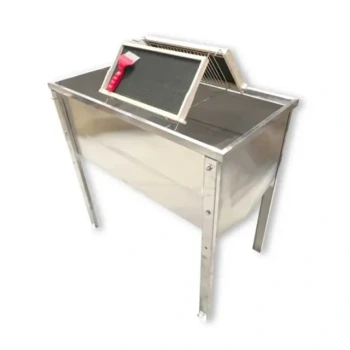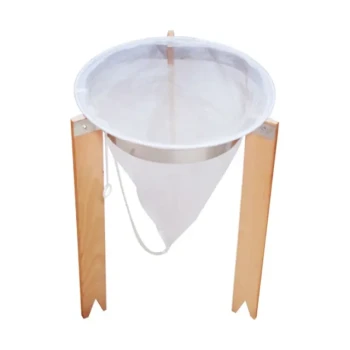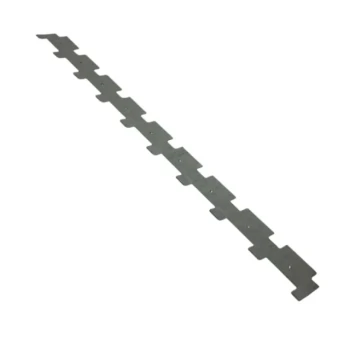The primary benefit of a honey heating tank is its ability to gently reduce honey's viscosity, making it significantly easier to process. This controlled warming allows for efficient filtration and bottling while meticulously preserving the honey's natural enzymes, flavor, and aroma, which can be easily damaged by improper heating methods.
Raw honey is often too thick to filter and bottle efficiently, but uncontrolled heat quickly destroys its delicate enzymes and flavor. A honey heating tank solves this core dilemma by providing precise, uniform warmth, enabling smooth processing without sacrificing the honey's natural integrity.

The Core Function: Mastering Viscosity Without Degradation
A honey heating tank isn't just about making honey warm; it's about exercising precise control over that warmth. The goal is to make the honey workable at the lowest possible temperature to protect its quality.
Preserving Natural Honey Quality
Gentle, controlled heating is non-negotiable for premium honey. It maintains the natural properties, including its unique flavor profile, aroma, and nutritional value.
Most importantly, it minimizes the degradation of beneficial enzymes and compounds, which are the hallmarks of high-quality, raw honey.
Achieving Uniform Temperature
A key feature of a quality heating tank is its ability to heat evenly. This prevents "hot spots" that can scorch the honey, altering its taste and color permanently.
This uniform heating ensures every part of the batch is brought to the ideal temperature without damaging any portion of it.
The Power of Precise Control
These tanks allow operators to set and maintain the exact temperature needed. This precision prevents overheating, which is the most common cause of quality loss in honey processing.
Different honey varieties and processing stages may require slightly different temperatures, and a good tank provides that level of control.
Unlocking Efficiency in Your Workflow
By making honey more fluid, a heating tank acts as a catalyst for the entire production line, removing bottlenecks and increasing throughput.
Dramatically Improved Filtration
Warmed honey passes through filters with far less resistance. This allows you to effectively remove impurities like wax particles, bee parts, and other debris.
The result is a clearer, more stable, and more visually appealing final product that customers expect.
Streamlined Pumping and Bottling
Reduced viscosity makes honey much easier to move. Honey pumps can transfer the product to storage or bottling lines efficiently without strain or damage.
This leads to faster, cleaner, and more accurate bottling, reducing waste and labor time.
Increased Overall Throughput
By speeding up filtration and bottling, the entire workflow becomes more efficient. This allows producers to process larger volumes of honey in less time, directly impacting scalability and profitability.
Understanding the Trade-offs and Considerations
While invaluable, a honey heating tank is a piece of professional equipment that requires proper understanding and use to be effective.
The Persistent Risk of Overheating
Even with a precision tank, user error is a factor. Setting the temperature too high will still degrade the honey. The tank is a tool for control, not a replacement for knowledge of proper handling temperatures.
Cost vs. Operational Scale
These tanks are a significant investment. For a small-scale hobbyist, the cost may not be justifiable. However, for any beekeeper or producer selling honey commercially, they are virtually essential for ensuring product consistency and efficiency.
Essential Hygiene Protocols
Like all food-grade equipment, honey heating tanks must be cleaned meticulously. Most are made of stainless steel to facilitate hygiene, but rigorous cleaning protocols are necessary to prevent contamination between batches.
Making the Right Choice for Your Goal
A honey heating tank is a strategic investment that unlocks quality and efficiency. Your specific goals will determine its importance to your operation.
- If your primary focus is producing premium, raw honey: A heating tank is crucial for gently liquefying crystallized honey and filtering it without destroying its delicate enzymes and beneficial properties.
- If your primary focus is increasing processing volume: The efficiency gains in filtration, pumping, and bottling make a heating tank an essential component for scaling your operation.
- If your primary focus is transitioning from hobby to business: This piece of equipment is a key step toward producing a consistent, professional-grade product that can compete in the market.
Ultimately, a quality heating tank is the tool that transforms raw honey from the hive into a stable, beautiful, and high-value product.
Summary Table:
| Benefit | Key Advantage |
|---|---|
| Quality Preservation | Protects natural enzymes, flavor, and aroma through precise, gentle heating. |
| Process Efficiency | Speeds up filtration and bottling by reducing honey's viscosity. |
| Uniform Heating | Prevents hot spots and scorching for consistent batch quality. |
| Operational Scalability | Increases throughput, enabling commercial producers to handle larger volumes. |
Ready to elevate your honey processing with professional-grade equipment? HONESTBEE supplies commercial apiaries and beekeeping equipment distributors with high-quality honey heating tanks designed for precision and durability. Our wholesale-focused operations ensure you get the reliable equipment needed to protect your honey's quality while scaling your production. Contact our experts today to discuss your specific needs and discover how we can support your business growth.
Visual Guide

Related Products
- Stainless Steel Heated Honey Tank Warming Heating Tank
- Stainless Steel Uncapping Tank with Stand and Strainer
- Professional Honey Storage Tank with Agitation System
- Stainless Steel Honey Storage and Settling Tank with Double Strainer
- 0.5T Capacity Honey Dehumidifier Dryer with Vacuum Heating and Thickening Filtering Machine
People Also Ask
- Can I store honey in stainless steel? A Guide to Safe, Long-Term Honey Storage
- What are the efficiency benefits of using a honey heating tank? Boost Processing Speed & Protect Honey Quality
- What should be done with the condensate in the recovery tank during the concentration process? Ensure Peak System Efficiency
- What safety and maintenance tips should be followed when using a honey bucket heater? Ensure Honey Quality and Equipment Longevity
- How does a honey heating tank preserve the quality of honey? Gentle Heat for Purity & Flavor



















